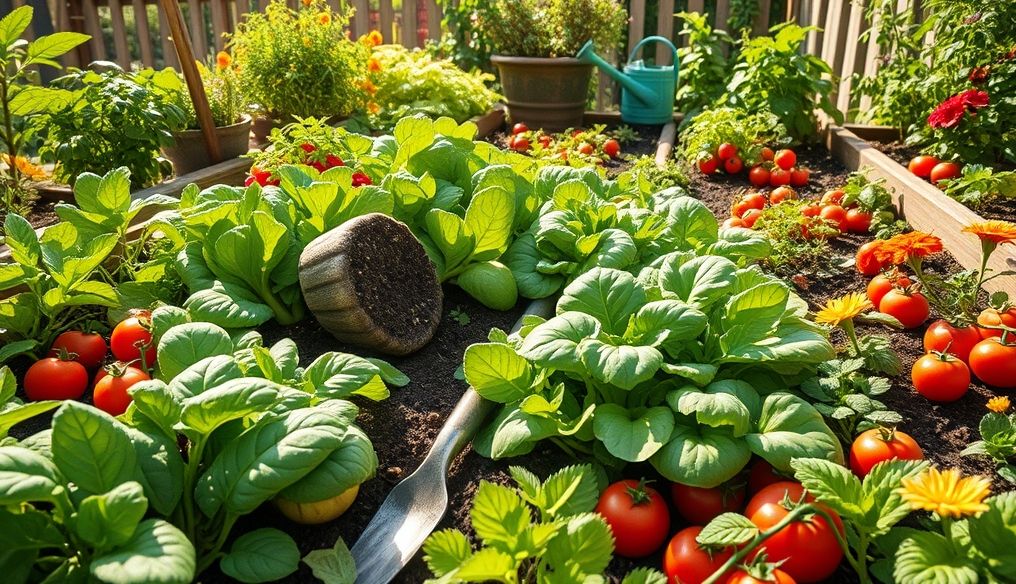Are Chemical Fertilizers Harmful to Health and the Environment? What are the Safe Natural Alternatives?
Chemical fertilizers are an integral part of modern agriculture, contributing to increased productivity and improved crop quality. However, their increasing use has raised concerns about their negative impact on health and the environment. In this article, we will explore the potential harms of chemical fertilizers and examine natural alternatives that can help maintain soil and environmental health.
Chapter 1: Chemical Fertilizers: Benefits and Risks
What are Chemical Fertilizers?
Chemical fertilizers are manufactured substances containing essential nutrients that plants need for growth, such as nitrogen, phosphorus, and potassium (NPK). These fertilizers aim to provide nutrients quickly and efficiently, leading to increased agricultural production.
Benefits of Chemical Fertilizers
- Increased Productivity: Chemical fertilizers help increase crop yields significantly, contributing to meeting the growing demand for food.
- Improved Crop Quality: Chemical fertilizers can improve crop quality in terms of size, shape, and nutritional content.
- Ease of Use: Chemical fertilizers are easy to use and apply, making them a popular choice among farmers.
Risks of Chemical Fertilizers
Despite their benefits, chemical fertilizers carry several potential risks:
- Water Pollution: Chemical fertilizers can leach into groundwater, rivers, and lakes, leading to pollution. Nitrates in fertilizers can cause "Blue Baby Syndrome" (Methemoglobinemia) and threaten aquatic life.
- Soil Degradation: Overuse of chemical fertilizers can lead to soil degradation, reduced fertility, and destruction of beneficial microorganisms.
- Health Effects: Exposure to chemical fertilizers can cause health problems in humans, such as respiratory, skin, and eye issues, as well as an increased risk of certain cancers.
- Damage to Biodiversity: Chemical fertilizers can negatively affect biodiversity, harming beneficial insects and other organisms that play a vital role in the ecosystem.
Chapter 2: Health Effects of Chemical Fertilizers
Food Contamination
Residues of chemical fertilizers can accumulate in food crops, exposing consumers to the risk of exposure to harmful chemicals. These substances include nitrates, phosphates, and heavy metals, which can cause chronic health problems.
Respiratory Problems
Inhaling chemical fertilizers can irritate the respiratory system, causing symptoms such as coughing, asthma, and shortness of breath. This effect can be more dangerous for people with chronic respiratory problems.
Skin and Eye Problems
Contact with chemical fertilizers can cause irritation, allergies, and redness of the skin and eyes. In some cases, prolonged exposure can lead to chronic skin problems.
Increased Cancer Risk
Some studies suggest that prolonged exposure to chemical fertilizers can increase the risk of certain cancers, such as leukemia and stomach cancer. However, more research is needed to confirm this relationship.
Chapter 3: Environmental Effects of Chemical Fertilizers
Water Pollution
Water pollution is one of the most prominent environmental problems associated with the use of chemical fertilizers. Nitrates and phosphates in fertilizers can leach into groundwater, rivers, and lakes, leading to pollution. This pollution leads to the growth of harmful algae, which consume oxygen in the water and kill aquatic life.
Soil Degradation
Overuse of chemical fertilizers can lead to soil degradation and reduced fertility. Chemical fertilizers kill beneficial microorganisms in the soil, reducing its ability to retain water and nutrients. They can also lead to the accumulation of salts in the soil, making it unsuitable for cultivation.
Air Pollution
Chemical fertilizers can release harmful gases into the air, such as nitrous oxide and ammonia. These gases contribute to air pollution and climate change, and increase the risk of respiratory diseases.
Damage to Biodiversity
Chemical fertilizers can negatively affect biodiversity, harming beneficial insects and other organisms that play a vital role in the ecosystem. For example, chemical fertilizers can kill bees and butterflies, affecting pollination and reducing crop yields.
Chapter 4: Natural Alternatives to Chemical Fertilizers
Organic Compost
Organic compost is a natural material composed of decomposed plant and animal residues. Organic compost is a rich source of essential nutrients that plants need for growth, and it improves soil properties and its ability to retain water and nutrients.
Green Manure
Green manure involves planting specific plants, such as legumes, and then plowing them into the soil before they mature. These plants help fix nitrogen in the soil and improve its fertility.
Fallowing
Fallowing is leaving the land uncultivated for a certain period of time, allowing the soil to recover and restore its fertility. Fallowing can be effective in improving soil quality and reducing the need for chemical fertilizers.
Crop Rotation
Crop rotation is planting different types of crops alternately in the same land. This method helps improve soil fertility and reduce the spread of pests and diseases.
Biofertilizers
Biofertilizers are products containing beneficial microorganisms, such as bacteria and fungi, that help fix nitrogen in the soil and improve plant absorption of nutrients.
Chapter 5: Organic Compost: The Ideal Solution for Sustainable Agriculture
Benefits of Organic Compost
- Improved Soil Fertility: Organic compost increases soil fertility and its ability to retain water and nutrients.
- Nutrient Provision: Organic compost provides essential nutrients that plants need for growth, such as nitrogen, phosphorus, and potassium.
- Reduced Need for Chemical Fertilizers: Using organic compost can reduce the need for chemical fertilizers, reducing environmental pollution.
- Improved Plant Health: Organic compost helps improve plant health and increase their resistance to diseases and pests.
Types of Organic Compost
- Farmyard Manure: Consists of animal dung, food scraps, and agricultural waste.
- Compost: Consists of decomposed plant residues and organic waste.
- Humus: Consists of fully decomposed plant and animal residues.
How to Use Organic Compost
Organic compost can be used by mixing it with the soil before planting, or by placing it around the plants after planting. Make sure that the organic compost is fully decomposed before use to avoid the spread of diseases and pests.
Chapter 6: Biofertilizers: Environmentally Friendly Technology
What are Biofertilizers?
Biofertilizers are products containing beneficial microorganisms, such as bacteria and fungi, that help fix nitrogen in the soil and improve plant absorption of nutrients. Biofertilizers are an environmentally friendly alternative to chemical fertilizers, as they do not cause soil or water pollution.
Types of Biofertilizers
- Nitrogen Biofertilizers: Contain bacteria that fix nitrogen from the air and convert it into a form that plants can use.
- Phosphate Biofertilizers: Contain fungi that dissolve phosphate in the soil and convert it into a form that plants can use.
- Potassium Biofertilizers: Contain bacteria that dissolve potassium in the soil and convert it into a form that plants can use.
Benefits of Biofertilizers
- Improved Soil Fertility: Biofertilizers help improve soil fertility and increase its ability to retain water and nutrients.
- Nutrient Provision: Biofertilizers provide essential nutrients that plants need for growth, such as nitrogen, phosphorus, and potassium.
- Reduced Need for Chemical Fertilizers: Using biofertilizers can reduce the need for chemical fertilizers, reducing environmental pollution.
- Improved Plant Health: Biofertilizers help improve plant health and increase their resistance to diseases and pests.
Chapter 7: Organic Farming: A Sustainable Agricultural System
What is Organic Farming?
Organic farming is an agricultural system that relies on the use of natural resources and avoids the use of chemical fertilizers and synthetic pesticides. Organic farming aims to maintain soil and environmental health, and produce healthy and safe food crops.
Principles of Organic Farming
- Maintaining Soil Health: Organic farming relies on the use of methods that maintain soil health, such as using organic compost, green manure, and crop rotation.
- Avoiding the Use of Chemical Fertilizers and Synthetic Pesticides: Organic farming prohibits the use of chemical fertilizers and synthetic pesticides, and relies on the use of natural alternatives.
- Maintaining Biodiversity: Organic farming encourages maintaining biodiversity by providing a suitable environment for beneficial organisms.
- Producing Healthy and Safe Food Crops: Organic farming aims to produce healthy and safe food crops, free from residues of harmful chemicals.
Benefits of Organic Farming
- Improved Soil Health: Organic farming helps improve soil health and increase its fertility.
- Reduced Environmental Pollution: Organic farming reduces environmental pollution by avoiding the use of chemical fertilizers and synthetic pesticides.
- Producing Healthy and Safe Food Crops: Organic farming produces healthy and safe food crops, free from residues of harmful chemicals.
- Supporting Sustainable Development: Organic farming supports sustainable development by conserving natural resources and protecting the environment.
Chapter 8: Practical Tips to Reduce the Use of Chemical Fertilizers
- Conduct a Soil Analysis: Before using any fertilizer, conduct a soil analysis to determine the nutrients that plants need.
- Use Organic Compost: Organic compost can be used as an alternative to chemical fertilizers, or to reduce the amount of chemical fertilizers used.
- Plant Leguminous Crops: Leguminous crops, such as beans and lentils, can be planted to fix nitrogen in the soil.
- Use Biofertilizers: Biofertilizers can be used to improve plant absorption of nutrients.
- Follow Crop Rotation: Crop rotation can be followed to improve soil fertility and reduce the spread of pests and diseases.
- Use Drip Irrigation: Drip irrigation can be used to reduce fertilizer loss through surface runoff.
- Monitor Plants Regularly: Plants should be monitored regularly for any signs of nutrient deficiencies, and adjust the amount of fertilizer used as needed.
Conclusion
Although chemical fertilizers play an important role in increasing agricultural production, their overuse can cause serious health and environmental damage. Fortunately, there are many natural alternatives that can help maintain soil and environmental health, and produce healthy and safe food crops. By adopting sustainable agricultural practices, such as using organic compost, green manure, and biofertilizers, we can reduce our reliance on chemical fertilizers and protect our health and environment.




